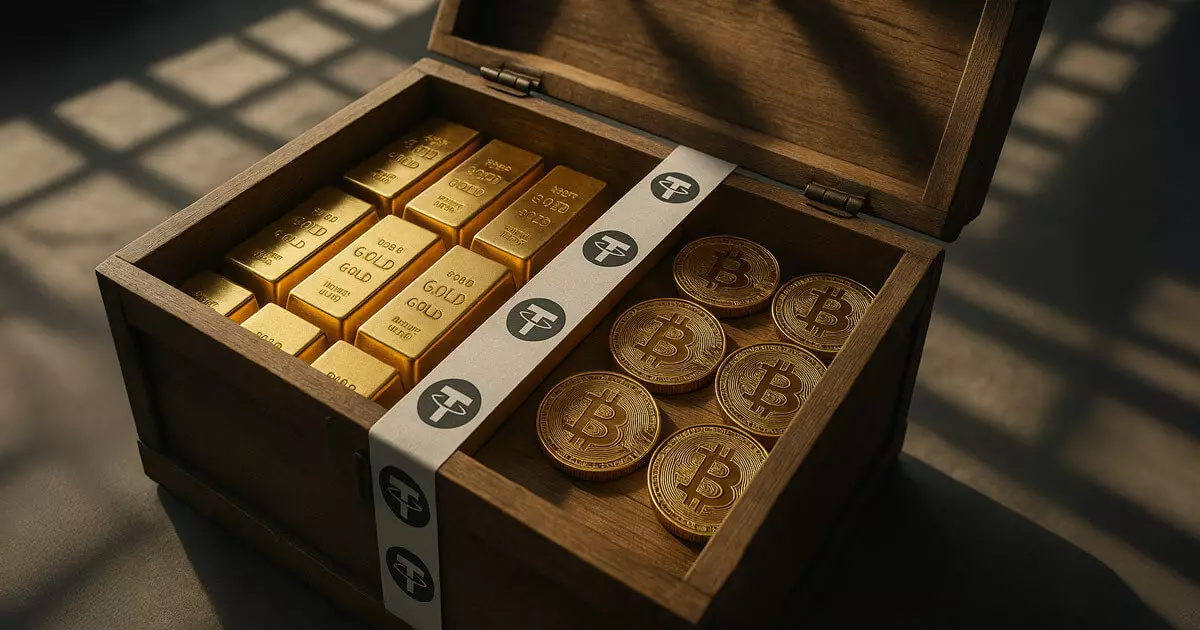In the rapidly evolving world of cryptocurrencies, Tether’s recent revelation about holding approximately $8 billion in gold is not just a trivial detail—it’s a strategic move rooted in stability and credibility. Amidst the tumult of digital asset volatility, Tether’s CEO, Paolo Ardoino, positions gold as a vital reserve component that imbues the stablecoin with tangible backing. This commitment signals a nuanced understanding of the fragile confidence in fiat currencies, especially amid concerns over US fiscal policies and global economic uncertainties. The choice of a Swiss vault—the most secure globally—further emphasizes the company’s focus on security and trustworthiness. Yet, beneath this apparent stability lies a complex web of implications, exposing the tension between traditional assets and modern blockchain-backed finances.
Gold’s Role in Reinforcing Financial Integrity
The decision to allocate nearly 5% of Tether’s reserves to gold highlights a provocative stance: that physical assets are essential to safeguarding digital assets. While critics may suggest that this limits Tether’s liquidity adaptability, advocates argue it offers a hedge against systemic risks and extreme monetary policies. By owning almost the entire 80-ton stockpile, Tether distinguishes itself from many other private gold holders, positioning itself as a serious player in both the bullion and digital currency domains. The fact that the firm can self-custody bullion at a lower cost compared to commercial vaults signifies a deliberate strategy to economize without sacrificing security. This move underscores the tension between traditional asset management and the innovative potential of blockchain-backed reserve systems.
Regulatory Roadblocks and Strategic Dilemmas
Despite these advantages, Tether’s gold-backed ambitions face formidable regulatory hurdles. Upcoming policies like the US’s GENIUS Act and Europe’s MiCA regulation prefer cash or near-cash collateral for stablecoins, essentially excluding commodities like gold. If enforced strictly, Tether could be forced to liquidate significant portions of its bullion holdings, undermining its reserve backing and possibly destabilizing USDT’s peg. This regulatory environment exemplifies the clash between conservative financial oversight and innovative decentralized finance. Tether’s exclusion from MiCA’s licensing adds an extra layer of uncertainty, forcing the company to navigate the fine line between compliance and maintaining its reserves. Its approach of retaining some gold-linked tokens like XAUT hints at a strategic workaround, keeping some gold exposure intact while respecting regulatory confines.
Gold as a Strategic Hedge in a Geopolitical Context
Tether’s assertion that central banks—particularly in BRICS nations—are aggressively accumulating gold underscores a broader geopolitical reality. Gold is not just an insurance policy but a symbol of economic resilience in an increasingly fragmented global order. As traders and institutions hedge against shifting trade dynamics and geopolitical tensions, gold’s recent 25% rise in 2025 signals its enduring appeal. Ardoino’s perspective that demand could surge if US fiscal policy erodes confidence encapsulates a center-right view: that genuine stability and sovereignty are anchored in tangible assets like gold rather than manipulated currencies or over-leveraged financial systems. This perspective challenges the narrative that purely digital solutions can replace the fundamental safety properties offered by physical assets.
Bridging the Traditional and the Digital
What makes Tether’s approach particularly compelling—yet contentious—is its hybrid model. By backing USDT with a mix of Treasurys and gold, the company strives to combine the liquidity advantages of blockchain with the perceived security of physical metals. The concept of a token directly convertible into vaulted bars encapsulates an innovative attempt to marry traditional bullion economics with blockchain formality. However, this integration remains fragile, susceptible to evolving regulations and geopolitical shifts. Tether’s strategic emphasis on physical assets underscores a cautious optimism: that in a crisis, tangible reserves may be the ultimate safeguard against the collapse of digital faith. Whether this model will withstand regulatory scrutiny or be dismissed as a mere marketing ploy remains to be seen, but it undeniably marks an important step in the ongoing quest for trustworthy stablecoins.


Leave a Reply